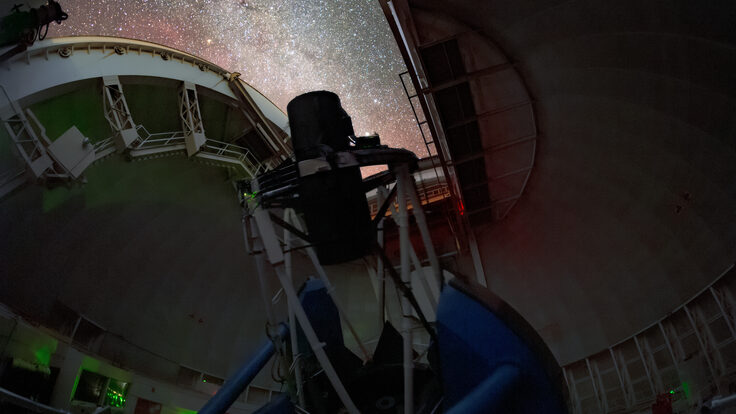Boy, I decide to sleep in for just ONE morning and what happens: scientists confirm the existence of the super-heavy element 114. So I missed the scoop, but it's neat to see such an awesome, yet kind of technical story hit major news outlets like the LA times (and lots of other sites including Wired and Popular Science).
Element 114, via the Knight Science Journalism Tracker
Ten years ago, scientists at the Joint Institute for Nuclear Research in Dubna, Russia, reported creating element 114, or an atom with 114 protons in its nucleus. Scientific results generally need to be duplicated to be considered truly valid, and the long wait was starting to make scientists nervous that something was wrong. But this week scientists at Lawrence Berkeley National Laboratory reported successfully creating two isotopes of element 114.
LBNL scientists used the lab's 88-inch Cyclotron and an instrument called the Berkeley Gas-filled Separator (BGS) in their experiment. To create an element with 114 protons in its nucleus, the group literally combined two atoms with atomic numbers that add up to 114: calcium (with 20 protons in the nucleus) and plutonium (with 94 protons in the nucleus). The two lighter atoms were combined (read: slammed together at great speeds) in the cyclotron to form one super-heavy atom. It sounds simple enough but I'm sure there was a great deal of ingenuity and and hard work by the LBNL scientists.
The discovery is certainly more nuclear physics than particle, but it's interesting to note the very interesting relationship that the two fields have. For the past one hundred plus years, particle physicists have worked hard to break down or forcibly smash apart smaller and smaller subsets of structure, only to hungrily push onward to even smaller and more fundamental realms. Nuclear physicists tend to pause for reflection, pick up the pieces of those structures, and try and put them together again. At the Relativistic Heavy Ion Collider, RHIC, at Brookhaven National Laboratory, nuclear physicists are trying to recreate states of matter that existed shortly after the big bang (they now think it was more like a liquid than a gas), which requires intricate knowledge about quarks and gluons, how they exist independently and how they come together to create larger particles. The conveyor belt goes both ways, and discoveries at RHIC will make their way back up to modern day particle physicists.
What's sort of a bummer about the discovery is that both 114 isotopes decay in less than a second. Previous theories had hoped that as artificially created super heavy elements got heavier, scientists would find an "island of stability," where these elements could exist for minutes, hours, or even years. If that were true, we might have a chance to study them at length or use them for some wild and unforeseen applications.







